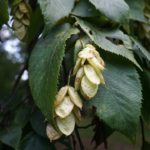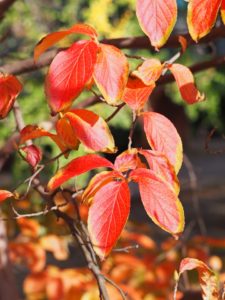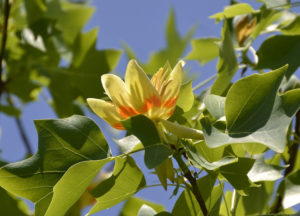
By Eric Olson
It is vanishingly rare that a town within ten miles of Boston can, with a single purchase, add nearly 200 acres to its portfolio of open space. That is exactly what Waltham did in the fall of 2014 when its mayor and city council agreed to buy the former Fernald Development Center from the state. I bet most Belmont residents are at least passingly familiar with this property, tucked up in Waltham’s northeast corner between Trapelo and Waverley Oaks roads, less than a quarter-mile from the Belmont line.
As a resident of Newton, I had never heard of the place, but as a sometimes-volunteer with the Waltham Land Trust and as an instructor of a field biology course at Brandeis, my name came to the attention of George Darcy, one of the Waltham city councilors who spearheaded the Fernald purchase. Darcy wanted someone to survey the trees of his town’s new acquisition, and I was pleased when he asked me if I would like to take on the job.
I agreed on the condition that I could also scope out the property for a possible location of my favorite New England habitat, a sunny meadow attractive to butterflies, bees, and other pollinators. Such a habitat would have to be deliberately planted, though. “I am quite certain that we can do that,” replied Darcy. So we had a deal.
That was back in 2019, and teaching duties and other obligations meant I could get over to the Fernald only now and then. Gradually my visits to the property—always stopping by the Waltham Police HQ to let them know I was heading over there—resulted in a fairly complete survey. I made no effort to identify and map every last tree, but instead, per Darcy’s request, I focused on those growing close to any of the site’s 66 buildings and its various roads and parking lots.
The goals in this targeted survey were two-fold. Goal one was simply to figure out what the city had. Darcy predicted that over the Fernald Hospital’s 120+ years of existence, “specimen” trees of unusual provenance were likely to have been planted by hospital directors and their groundskeepers. Such trees were of course most likely to be in the more developed sections of the property.
Second, identifying nearby trees would help guide upcoming demolition work. Some of the site’s 66 buildings were due to be torn down, and parking lots and perhaps some roads pulled up. The aim was to avoid damaging trees that are “special” based on a variety of criteria, including simply being the only individual of its species at the site, even if common elsewhere. Other criteria I used during the survey included impressive size and value for wildlife.
A few weeks ago I sent in the completed maps to the city of Waltham. I found that Norway maple is one of the most common trees on the property and that there are few truly exotic trees. The Fernald is no Arnold Arboretum, in other words, but there’s one large Katsura, a tree native to Japan, and a Stewartia, also Asian in origin. I recommend readers visit a few Stewartia websites for a look at this handsome tree, for it has it all: lovely white flowers, interesting bark in all seasons, and terrific fall color. We should always favor native species when choosing to plant a new tree, but I would not object to seeing more Stewartias planted in local parks and yards!
Other trees of note include some impressively large red and white oaks, towering hickories, and the biggest hop hornbeam (Ostrya virginiana) I have ever seen. Species represented include black walnut, basswood (both native and the European little-leaf); the native maples silver, red, and sugar; cottonwoods, sycamores, white and red pines, honey locust, catalpa, willow (species unclear), black cherry, arbor vitae, staghorn sumac, some surviving elms and Eastern Hemlocks (both species vulnerable to long-term disease or pest problems, and increasingly rare throughout their range); tulip tree (one) and a magnificent larch also known as tamarack (also just one).
In addition to an abundance of Norway maples, other non-natives include a couple of Japanese Zelkova and some Norway spruce. There’s more, but you get the picture: this is a good diverse collection, and it was smart to request a survey at this time before more intensive site work begins.
I have sent the completed maps to Darcy, Sonja Wadman of the Waltham Land Trust, and the City of Waltham Geographic Information System director, Eric Rizzo. Rizzo intends to merge my survey results with his city-wide tree-inventory maps, at which time they should be widely available on the city website. Until then interested Belmont residents should be able to obtain a PDF of the work via Rizzo or perhaps other city or Land Trust officials.
Upon reviewing the tree maps of his city’s new 190+ acres, Darcy took great delight in the botanical diversity of the place, and observed, “Fernald is kind of a site that has something for everyone, be it human, bird, or insect.” Darcy also welcomed my separate maps indicating a few promising locations for installing a pollinator meadow.
Yes, the Fernald could become something for most everyone. The potential is certainly there. May its development—and “un-development”, returning more land to nature—proceed apace, so that it can soon become more welcoming to all varieties of organisms: birds, insects, and of course, us humans.
Dr. Eric Olson is a senior lecturer in ecology at Brandeis University





Sorry, the comment form is closed at this time.